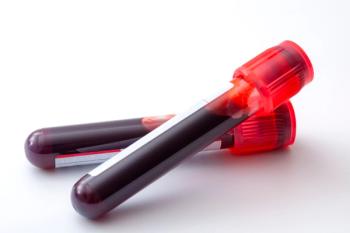
- dvm360 January 2023
- Volume 54
- Issue 1
- Pages: 27
Rabbit endotracheal intubation: Yes, you can do it! (Part 2)

An expert walks clinicians through the technique, positioning, and equipment
Check out
Although different techniques may be used to intubate rabbits, we will focus on endotracheal intubation with direct visualization via rigid endoscope and camera. Please note that the intention is not to prove this method is superior, but rather to present the one that offers greater control and succeeds with the fewest number of attempts.1
Intubation with the aid of an endoscope and camera also allows for placement of a larger endotracheal tube, owing to the magnification provided by the camera and the direct visualization of the glottis made possible by the endoscope. That ensures less airway resistance during anesthesia (Table 1). As a rule of thumb, endotracheal tubes should be two-thirds the size of the tracheal diameter or laryngeal opening (Table 2). When available, cuffed endotracheal tubes should be used. However, smaller tubes usually come uncuffed.
General equipment needed
- Endotracheal tube of appropriate size (always have a smaller and larger one available)
- Stylet for endotracheal tube
- Regular stylets will not fit endotracheal tubes sized 2 and 2.5 mm
- Dental wire may be used as a stylet so long as it does not protrude from the tube and risk tracheal laceration
- Ties for endotracheal tube
- Sterile lubricant
- Gauze and cotton tipped applicators to grasp the tongue
- Lidocaine 2% to be applied to larynx prior to intubation
- 1 ml Luer lock tip syringe with 22 G Teflon catheter for lidocaine. The Luer lock is essential to guarantee catheter doesn’t detach and become lodged in airway or oral cavity.
- Anti-fog solution to prevent fogging of endoscope lenses inside the oral cavity
Endoscopic equipment
A rigid endoscope, a camera, a light source, and a monitor are all that is required. A good, affordable option may be an off-brand, high-resolution analog camera with a USB cable that can be connected to a monitor, laptop, or tablet. Lesser-known brands and even secondhand equipment may be found at online retailers. A fancy HD endoscopic camera is not necessary to be successful.
A smartphone endoscope adapter can be an alternative to the camera and monitor. Most adapters are designed to fit certain phone brands and models, but some can be used with a variety of smartphones and are thus preferable.
When it comes to rigid telescopes, the same holds true with regard to prices and sources. Rigid endoscopes come in different diameters, lengths, and angles. The most versatile option for beginners is a 2.7-mm, 30o, 18-cm rigid endoscope with a protection sheath (essential for protecting scope integrity). The 30o angle offers better visualization of the glottis. However, the intubation may be performed with different types of endoscopes.
The light source can be as simple and affordable as an LED light. They usually attach directly to the endoscope and are battery-operated or chargeable with a USB.
Patient positioning
Positioning is as important as the technique itself and will dictate its success or failure. The patient should be placed in sternal recumbency on the edge of the table, with thoracic limbs hanging off the table. The head and neck should be extended so that the nose points toward the ceiling and the neck is on a straight line with the thoracic limbs (Figure 1). It is very important that the ventral neck be free: handlers should not place their hands or fingers around the patient’s neck. If they do, the glottis will be displaced dorsally and the intubation will be compromised. Next, the tongue should be retrieved with a cotton tipped applicator and held against the side of the lower incisor with a piece of gauze. Then, gauze should be placed around the upper incisors and the mouth opened gently while the tongue is pulled out (Figure 2).
Handling the endoscope
When intubating a patient with an endoscope, the dominant hand should hold the endotracheal tube and the nondominant one the endoscope (Figure 3). The camera should always be kept in the upright position; otherwise, it will change the orientation of the image. When using the preferred 30o rigid scope, the light attachment or cable (for a traditional light source) should be flipped to the upright position (Figure 4) so that the angle of the scope tip faces the larynx, not the soft palate. The camera should always remain in the upright position, with only the light cable or attachment moving.
Side-by-side technique
With the side-by-side technique, the endoscope is placed alongside the tracheal tube. A variant of this is the over-the-scope technique, in which the endoscope is placed inside the endotracheal tube as a stylet. However, the 2.7-mm scope will often be bigger than the diameter of smaller tubes, preventing the use of the over-the-scope technique.
Before beginning, measure the endotracheal tube from the incisors to the thoracic inlet to determine the proper length for endotracheal tube insertion with patient in lateral recumbency.
After the patient is correctly positioned and induced, the lenses of the scope should be wiped with anti-fog solution and the step repeated every time they get dirty. No matter how tempting, one should never intubate with dirty lenses. Next, insert the scope in the oral cavity with the light cable/attachment up so that the the scope tip is facing the larynx, not the soft palate. Advance the scope to visualize the larynx, and with the dominant hand hold the syringe and apply 1 or 2 drops of 2% lidocaine to the larynx. Retrieve syringe and scope.
Next, insert the endotracheal tube and stylet in the oral cavity. The endotracheal tube must be directly visible at all times to prevent inadvertent tissue damage. If you cannot see the endotracheal tube, stop, retrieve the scope and tube, and begin again. The tube and scope should always be advanced together. Identify the tonsils and soft palate (Figure 5). The soft palate will likely be engaged and thus will cover the epiglottis (Figure 5). If so, gently touch the soft palate with the tube to dislodge it and reveal the epiglottis (Figure 6). Then, identify the glottis (Figure 7) and advance the tube, inserting it into the trachea (Figures 8-10). This last step can be a little frustrating until you find the correct angle of both scope and tube. Sometimes twisting the tube corrects its orientation, facilitating insertion into the trachea. Be gentle. If you find resistance, do not advance. Retrieve the tube and try again. Once you think you have introduced the tube into the trachea, remove the stylet and confirm intubation using EtCO2. Once confirmed, tie and secure the tube.
Ventilation with supraglottic airways
Supraglottic airway devices may be used to deliver anesthetic and/ or oxygen to anaesthetized patients. Developed based on rabbit anatomy, they are designed to sit in the pharynx. These devices are relatively easy to place, allow for ventilation similar to that achieved with endotracheal intubation, and can be cleaned and autoclaved. However, you must use the EtCO2 to guarantee the correct placement and ventilation.2 Device size depends on patient weight; there is no one-size-fits-all option. In addition, supraglottic airways do not replace endotracheal intubation in all cases, so one must still know how to properly intubate these patients.
To place the device, start with preoxygenation and anesthesia induction. The patient can be placed on lateral, dorsal, or sternal recumbency. Select appropriate size and lubricate device. Apply lidocaine topically to the larynx, extend the tongue out and to the side, and insert device into the mouth until you encounter resistance. Confirm placement using EtCO2 and secure the device. Once placed, avoid moving the patient, as the device is sensitive to position.
Laila Proença, MV, DVM, MS, PhD, DACZM, founder and CEO of VETAHEAD, has always been passionate about veterinary medicine. She is the first South American to become a diplomate of the American College of Zoological Medicine, with an emphasis on zoological companion animals. She is the coeditor of the 2015 Exotic Endoscopy issue of Veterinary Clinics of North America and has been actively participating in the zoological medicine community, leading wet labs and giving national and international lectures, courses (including on endoscopy), and master classes.
References
- Reabel SN, Queiroz-Williams P, Cremer J, et al. Comparison of blind and endoscopic-guided orotracheal intubation on laryngeal and tracheal damage in domestic rabbits (Oryctolagus cuniculus). Vet Anaesth Analg. 2022;49(4):398-406. doi:10.1016/j.vaa.2022.04.003
- Comolli J, Schnellbacher R, Beaufrere H, et al. Comparison of endoscopic endotracheal intubation and the v-gel supraglottic airway device for spontaneously ventilating New Zealand white rabbits under- going ovariohysterectomy. Vet Rec. 2020;187(10):e84. doi:10.1136/vr.105746
Articles in this issue
over 2 years ago
Retirement planning and the potential 401(k) fallacyover 2 years ago
Veterinary-owned management companies: Why not?over 2 years ago
ABCs of dentistry: Airway, breathing, and circulationover 2 years ago
The job descriptionover 2 years ago
Build your first veterinary hospitalover 2 years ago
The pet obesity epidemic: are we loving our pets to death?over 2 years ago
Hypoadrenocorticism in the emergency settingover 2 years ago
Pet birds need fewer seeds, more formulated dietsover 2 years ago
Increasing efficiency and productivity in uncertain timesNewsletter
From exam room tips to practice management insights, get trusted veterinary news delivered straight to your inbox—subscribe to dvm360.





